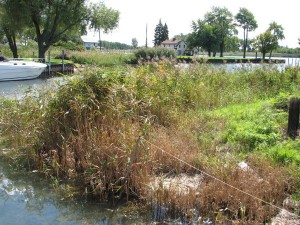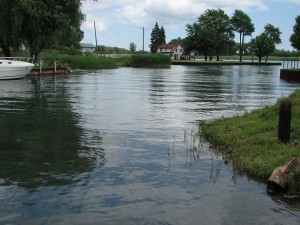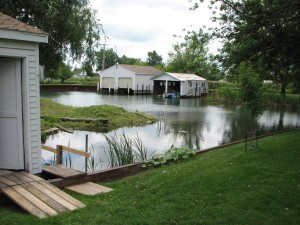June 1, 2015
Bob Williams, Phragmites.org
When I began invasive Phragmites management on my property about ten years ago, the only available advice for treatments came from government agencies treating large scale properties. It was great advice, based on decades of experimentation on large tracks of land. However, over the years, I have found there are major differences in available methods, equipment, materials, and results on large versus small scale projects. Government agencies and owners of large scale properties may have advantages in funding, access to large and expensive equipment, use of professionals for treatment, removal of biomass, and sometimes water level control; however, homeowners and land stewards have advantages which they need to understand and use to make their invasive Phragmites management work as effective as possible.
Homeowner advantages include:
- Lower costs due to the size of the property or infestation.
- Lower costs due to the use of volunteer labor and use of small scale equipment.
- Quicker results if they choose to do multiple treatments per year.
- More effective chemical treatment if they choose to pre-cut before treatment.
- Non-chemical options are available if they are willing to accept partial control.
- Obtaining more complete control due to constant vigilance.
- More sustainable treatments because of continued funding.
Homeowners and volunteers should be aware of these advantages, and these should be acknowledged in any program developed in support of homeowner management of invasive Phragmites. Homeowners and volunteers should also remember that any single piece of Phragmites management advice may not apply to all properties and all people. With constant vigilance, a personal stake in the outcome, and using their own labor, homeowners generally can management invasive Phragmites better on their own property than government agencies can on large scale properties. In addition, homeowner management efforts are more sustainable in the long run, because they have a personal investment in the treatments and are not depending on grants of limited length. Money spent by government agencies in educating and supporting homeowners in these efforts would be a great investment for sustainable Phragmites control.
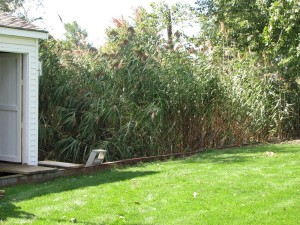
Invasive Phragmites posed a fire hazard next to this boathouse prior to treatment. Photo credit: Phragmites.org
Invasive Phragmites management advice for homeowners and land stewards also needs to be tailored to the scale of the property and funding. Small scale management programs will not be as successful if people strictly follow the procedures used by government agencies and owners of large scale properties. Local programs to support homeowners in Phragmites management should be tailored to the treatment methods that result in the best control on small scale properties.
The following chart (click to enlarge) summarizes some of the differences I see in large versus small scale Phragmites management methods and programs.
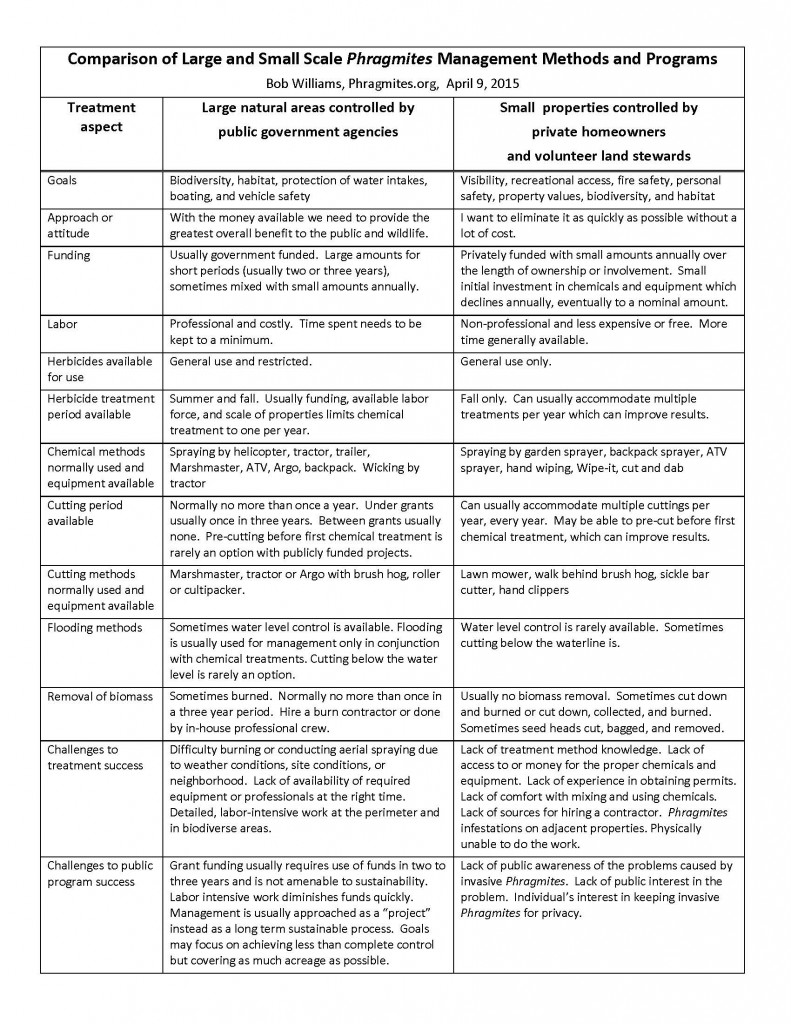
As you can see, different goals, available resources, timelines, and levels of investment create specific situations beyond just the size of the infestation that allow for different approaches to invasive Phragmites management for homeowners and land stewards. I hope this blog series, including two previous blogs: Why pre-cut Phragmites in the winter before the first year of chemical treatment? and Why apply multiple herbicide treatments in a single season? will provide guidance for these small-scale properties, and lead to greater success for homeowner invasive Phragmites management efforts. Finally, please join me for my upcoming webinar (register here) showcasing practical Phragmites control methods on June 10th. I will be providing recommendations for small scale, cost efficient, invasive Phragmites control, considering methods, products, and equipment that are easily available to homeowners – no helicopters, no contractors, no prescribed burning, no grant money. Though my recommendations focus on small scale projects they certainly could be applied to portions of large scale projects which have some small infestations or to a portion which could act as a demonstration area for the public.

